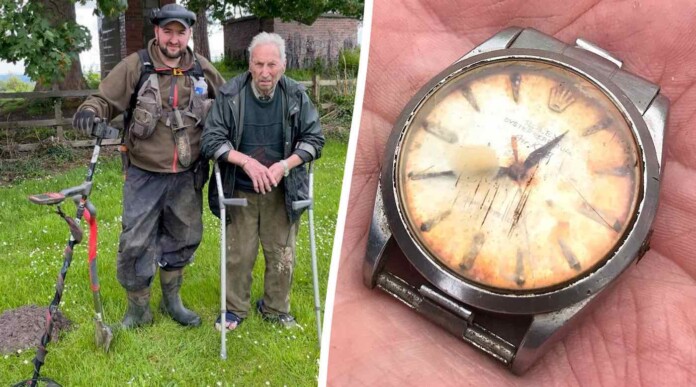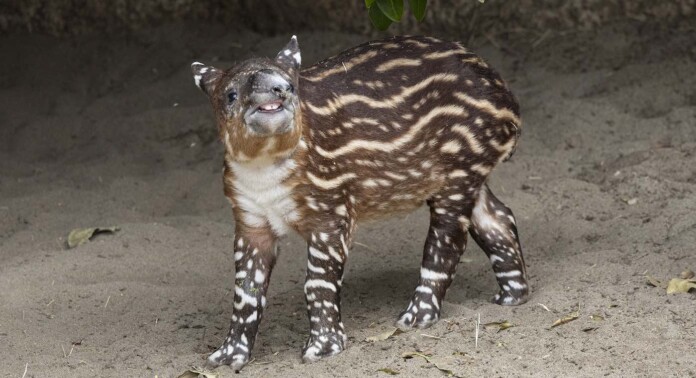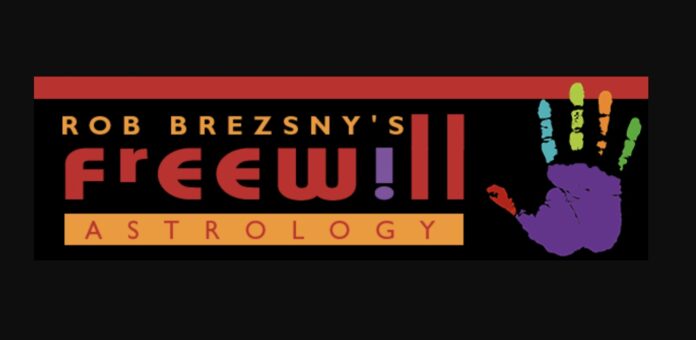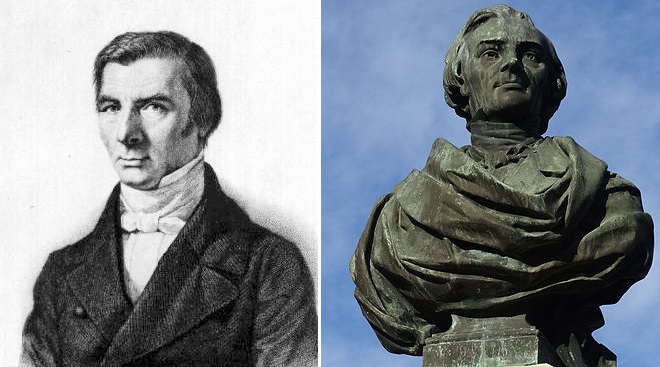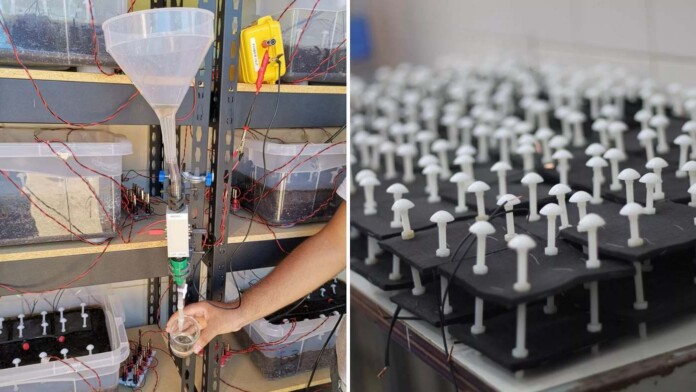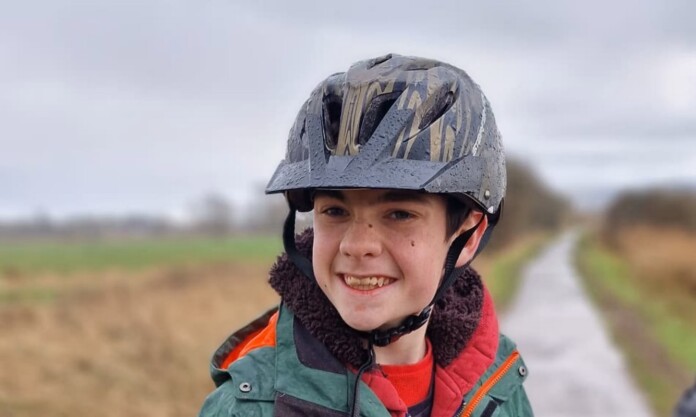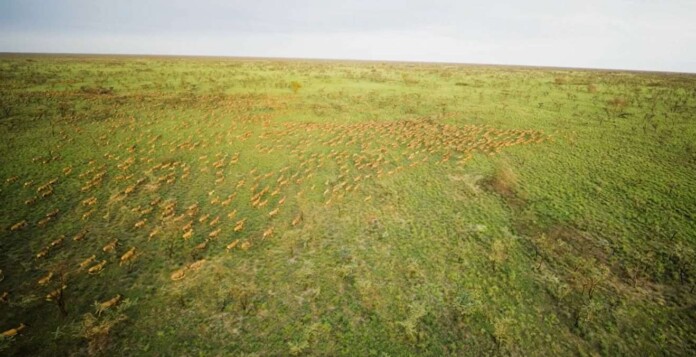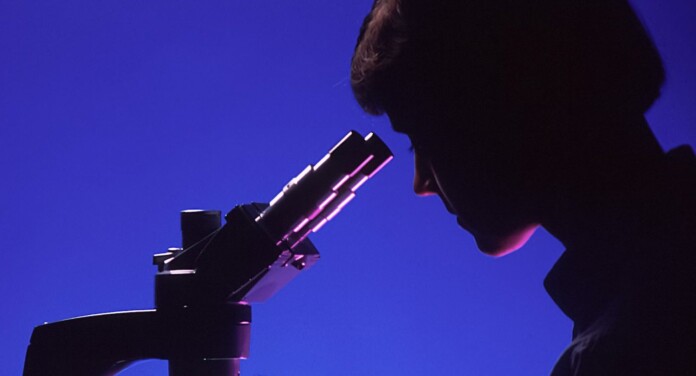84 years ago today, Congress ordered the creation of the Fish and Wildlife Service. The FWS was later reorganized into the ‘US’ Fish and Wildlife Service in 1956, but it was 1940 when they were first created and folded into the Department of the Interior. The FWS holds two chief responsibilities: managing the US National Wildlife Refuge System and assisting with the recovery of endangered species. READ more about this agency… (1940)
Earliest, Most Distant Galaxy Discovered with Webb Telescope Dates to 300Mil Years After Big Bang


For two years, an international team has been exploring what astronomers refer to as the Cosmic Dawn—the period in the first few hundred million years following the Big Bang where the first galaxies were born.
Using NASA’s James Webb Space Telescope (JWST), they’ve now discovered two of the earliest and most distant galaxies yet confirmed.
Dating back to just 300 million years after the Big Bang, these galaxies mark a major milestone in the study of the early universe, according to University of California-Santa Cruz astronomer Brant Robertson, who co-led the team working in JADES (the JWST Advanced Deep Extragalactic Survey).
“This discovery is completely unanticipated and is likely to be seen as the most significant extragalactic discovery with JWST to date,” said Robertson, an astronomy and astrophysics professor who sits on the JADES steering committee. He is the lead author on the first of three papers reporting various aspects of the discovery.
In one paper, the authors concluded: “With high-redshift galaxy populations now established fewer than 300 million years after the Big Bang, we have extended our reach into the cosmic past by 40% during the first eighteen months of JWST operations.”
“Redshift” refers to an effect caused by the expansion of the universe, where the wavelength of light from distant galaxies stretches as it travels. In these newly discovered galaxies, the effect is extreme—stretching by a factor of 15, and moving even the ultraviolet light of the galaxies to infrared wavelengths where only JWST has the capability to see it.
IS URANUS RINGED? See the Stunning New Image of Uranus–Showing Rings and its Moons Clearer Than Ever (LOOK)
Chasing early galaxies
Modern theory holds that galaxies develop in special regions where gravity has concentrated cosmic gas and dark matter into dense lumps known as “halos.” These halos evolve quickly in the early universe, merging into more and more massive collections of matter. This rapid development is why astronomers are so eager to find yet earlier galaxies: Each small increment moves our eyes to a less developed period, where brighter galaxies are even more distinctive and unusual.
“This galaxy is truly a gem, and it points at more hidden treasures in the early universe,” said Professor Robertson.
Found in a region near the Hubble Ultra Deep Field, the new galaxies, which have been confirmed spectroscopically, are now known as JADES-GS-z14-0 (the more distant one) and JADES-GS-z14-1.
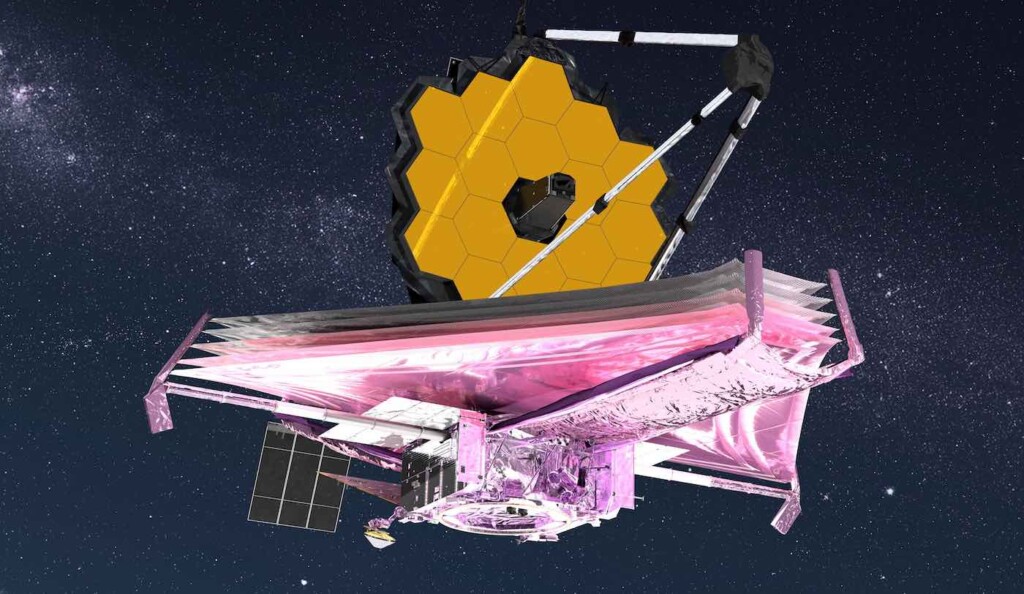
According to NASA, in addition to being the new distance record holder, JADES-GS-z14-0 is remarkable for how big and bright it is. JWST measures the galaxy at over 1,600 light-years in diameter. Many of the most luminous galaxies produce the bulk of their light via gas falling into a supermassive black hole, producing a quasar. But the team says the large size of JADES-GS-z14-0 means that the light must be produced by young stars.
THE HOLY GRAIL: NASA May Have Just Cracked the Code for Replacing Lithium in Batteries: ‘Double or even triple the energy’
Deeply hidden gems
And yet, the massive galaxy was a puzzle for the JADES team when they first spotted it over a year ago, as it appears close enough on the sky to a foreground galaxy that they couldn’t be sure that the two weren’t neighbors. But in October 2023, the JADES team conducted even deeper imaging—five full days with the JWST Near-Infrared Camera on just one field—to form the “JADES Origins Field.” With the use of filters designed to better isolate early galaxies, confidence grew that JADES-GS-z14-0 was indeed very distant.
In addition, the galaxy happened to fall in a region where the team had conducted ultra-deep imaging with the JWST Mid-InfraRed Instrument. These combined imaging results convinced the team to include the galaxy in what was planned to be the capstone observation of JADES, a 75-hour campaign to conduct spectroscopy on faint early galaxies. The spectroscopy confirmed their hopes that JADES-GS-z14-0 was indeed a record-breaking galaxy—and that the fainter candidate, JADES-GS-z14-1, was nearly as far away.
The combination of the high luminosity and the stellar origin makes JADES-GS-z14-0 the most distinctive evidence yet for the rapid formation of large, massive galaxies in the early universe.
“We could have detected this galaxy even if it were 10 times fainter, which means that we could see other examples yet earlier in the universe—probably into the first 200 million years,” Robertson added.
WATCH: NASA Visualizes What it Would Be Like to Plunge into a Black Hole
Robertson’s May 30 paper, Earliest Galaxies in the JADES Origins Field: Luminosity Function and Cosmic Star-Formation Rate Density 300 Myr after the Big Bang, is accepted for publication in the Astrophysical Journal.
SHARE THE COOL ASTRO NEWS With Space Geeks On Social Media…
Metal Detective Finds Farmer’s Rolex – 50 Years After it was Eaten by a Cow
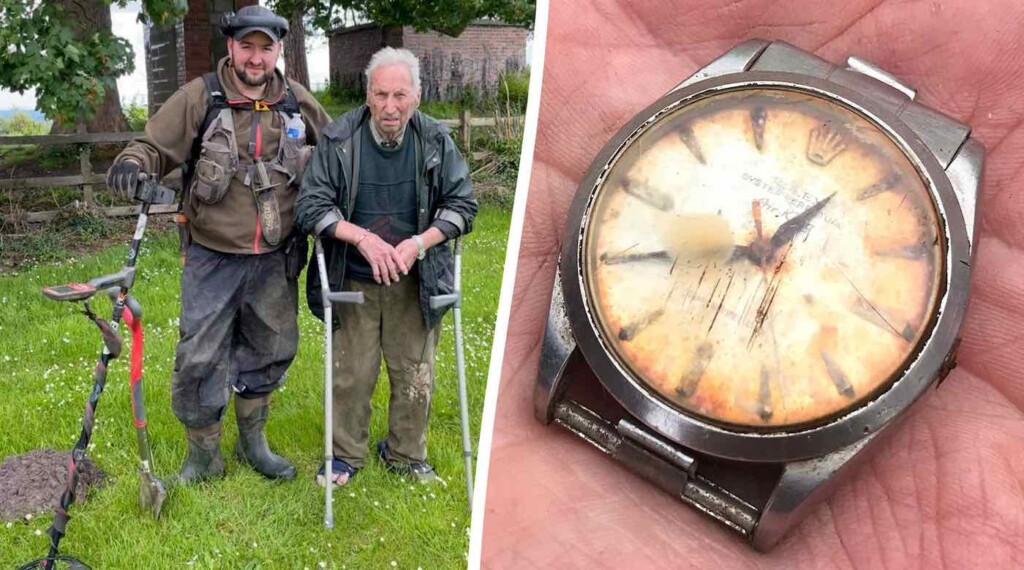
A metal detective unearthed a farmer’s Rolex watch in rural England—50 years after it was eaten by a cow.
James Steele lost the treasured timepiece in the early 1970s when the strap broke while he was tending his cattle. The farmer searched the field at his dairy farm in Shropshire, but there was no sign of the watch.
Incredibly, half-a-century later the 95-year-old has been reunited with it after metal detective Liam King found it buried in the mud. Now they’ve surmised that a cow swallowed the watch, and it ended up in a cow pile.
“The cow could have eaten it with a mouthful of grass, said the veteran. “It was an amazing stroke of luck for it to turn up again after all this time lost in the earth.
“I was really pleased because I never thought I would see the watch again.
The face now has a greenish color but it has not rusted up.
“It shows how well made it was to survive 50 years under a field.
Steele’s son, who runs the farm with his dad, told the metal detective he could come onto the land to look for coins. He didn’t uncover any, but did find the Rolex, pictured below.

“I’m most grateful to Liam who found the watch. He could have quite easily not owned up to his discovery.”
‘MONUMENTAL’ MOUNT VERNON FIND: Perfectly Preserved 250-Year-Old Cherries Found in Bottles Down in George Washington’s Cellar
Mr. Steele, who bought the watch on his 21st birthday for £100 in 1950—which is £4,500 / $5,700 in today’s money—will not bother repairing the Rolex, because of the expense, but says, “It’ll make a lovely keepsake.”
“I remember my neighbor had a very smart Rolex and I really fancied having one myself. I saved up and dug deep in my pockets for it—and wore it all the time.”
“I remember the day I lost it, I’d been out early with the cows. It was very cold so I’d had my hands in my pockets but at some point I must have been feeding a cow and it had slipped off or the strap had broken.
“We looked everywhere but I already knew it was gone and had probably been eaten by one of the cows.
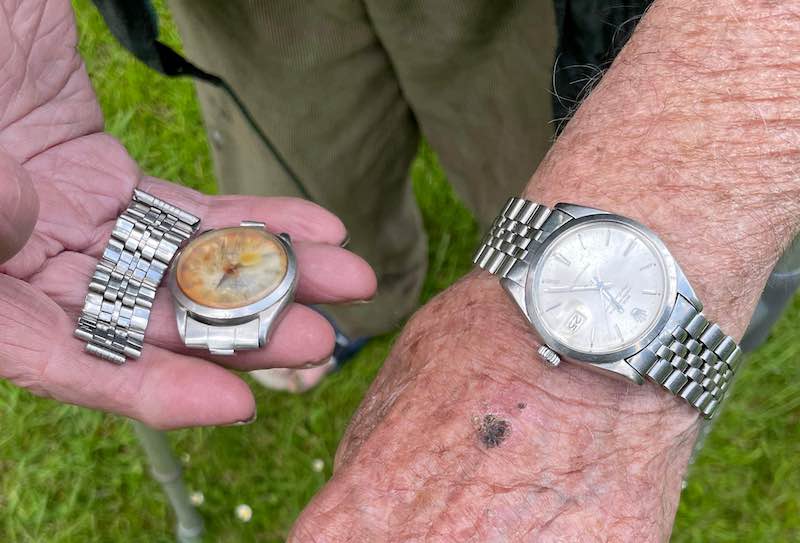
“I was gutted but I saved up again and bought another one.”
LOOK: Teacher Finds ‘Amazing’ Stone Carved With Ancient Celtic Script While Digging in His Garden
“It’s remarkable that the watch has turned up again and I’m delighted to have it back.”
SHARE THE AMUSING STORY With Farmers and Rolex Wearers on Social Media…
Endangered Baird’s Tapir Calf Born at San Diego Zoo Delights Visitors (LOOK)
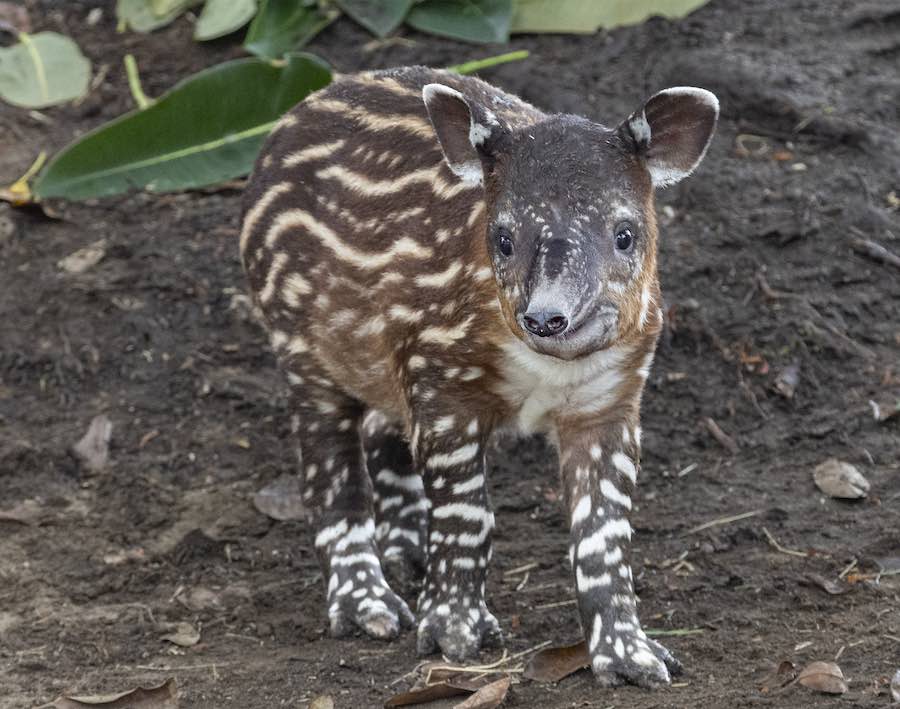
The San Diego Zoo excitedly welcomed an adorable baby Baird’s tapir this month—bolstering an endangered species that faces multiple challenges in the wild.
The female calf and her mother named Luna can now be seen bonding at the zoo’s elephant compound, sharing space with the capybaras.
Tapir newborns come into the world with patterns that provide excellent camouflage in the wild. In fact, baby tapirs are often left hidden while their mothers forage.
Luna, however, has been grooming and nursing the calf, vocalizing toward her, and keeping her close at all times.
The zoo says the calf is “starting to get the zoomies” and likes to play with leaves and food even if she’s not eating it.
When they grow into adults, tapirs’ coats change to a dark solid color, with a white chest, chin and ear fringes. They play a crucial role in maintaining the biological diversity of tropical forests.
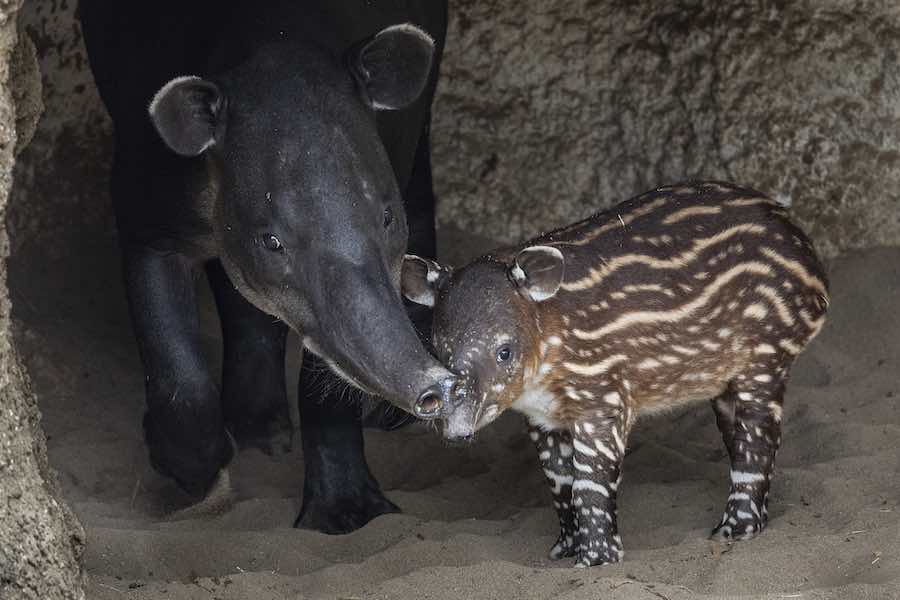
As essential seed dispersers, they contribute significantly to their ecosystems in Mexico, and Central and South America, by helping fertilize the forest floor. This process promotes the growth of new plants, which in turn provide food and shelter for a variety of other species.
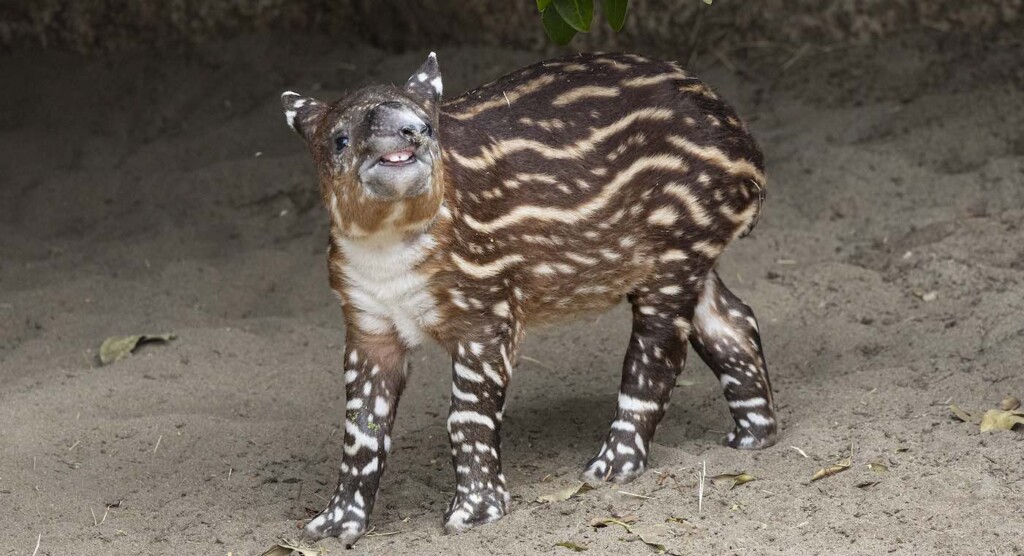
ANIMAL LENDS A HAND: Clever Elephant Returns Visitor’s Shoe After it Fell into his Enclosure – Watch
Conservationists needed to protect the species because it was being hunted for sport in Costa Rica and threatened by habitat loss due to farming, cattle grazing, and palm oil and rubber plantations, which ultimately reduces their food supply.
Efforts are underway to protect tapir habitats and promote them as flagship wildlife that could encourage tourism. This approach can create jobs beyond farming and logging and inspire people to help protect this unique animal.
ZANY ZOO STORY: One of the World’s Oldest Penguins Hatches a Chick with New Boy Toy 26 Years Younger
SHARE THE SWEET BABY With Animal-Lovers On Social Media…
Your Weekly Horoscope – ‘Free Will Astrology’ From Rob Brezsny
Our partner Rob Brezsny, who has a new book out, Astrology Is Real: Revelations from My Life as an Oracle, provides his weekly wisdom to enlighten our thinking and motivate our mood. Rob’s Free Will Astrology, is a syndicated weekly column appearing in over a hundred publications. He is also the author of Pronoia Is the Antidote for Paranoia: How All of Creation Is Conspiring To Shower You with Blessings. (A free preview of the book is available here.)
Here is your weekly horoscope…
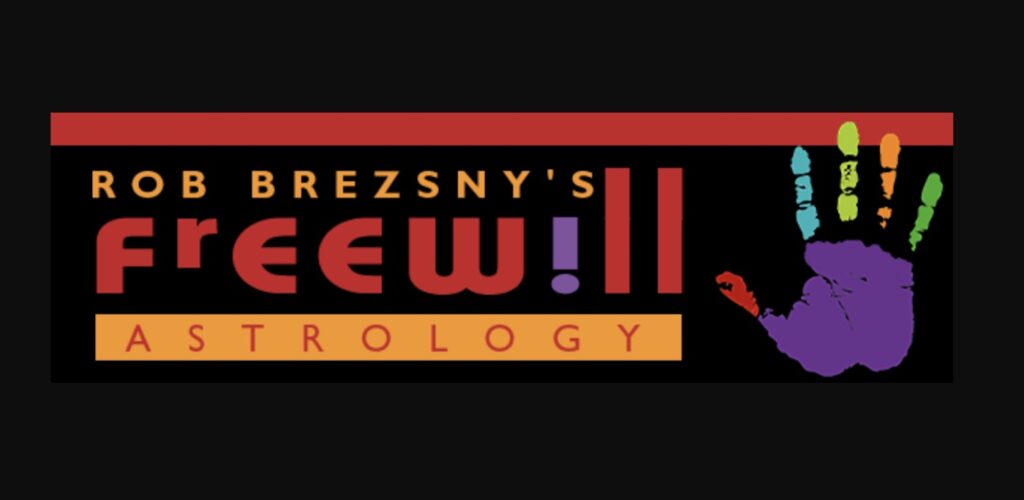
FREE WILL ASTROLOGY – Week of June 29, 2024
Copyright by Rob Brezsny, FreeWillAstrology.com

CANCER (June 21-July 22):
You are entering a phase when you will be wise to question fixed patterns and shed age-old habits. The more excited you get about re-evaluating everything you know and believe, the more likely it is that exciting new possibilities will open up for you. If you are staunchly committed to resolving longstanding confusions and instigating fresh approaches, you will launch an epic chapter of your life story. Wow! That sounds dramatic. But it’s quite factual. Here’s the kicker: You’re now in prime position to get vivid glimpses of specific successes you can accomplish between now and your birthday in 2025.

LEO (July 23-Aug. 22):
How many different ways can you think of to ripen your spiritual wisdom? I suggest you choose two and pursue them with gleeful vigor in the coming weeks. You are primed to come into contact with streams of divine revelations that can change your life for the better. All the conditions are favorable for you to encounter teachings that will ennoble your soul and hone your highest ideals. Don’t underestimate your power to get the precise enlightenment you need.

VIRGO (Aug. 23-Sept. 22):
Border collies are dogs with a herding instinct. Their urges to usher, steer, and manage are strong. They will not only round up sheep and cattle, but also pigs, chickens, and ostriches—and even try to herd cats. In my estimation, Virgo, border collies are your spirit creatures these days. You have a special inclination and talent to be a good shepherd. So use your aptitude with flair. Provide extra navigational help for people and animals who would benefit from your nurturing guidance. And remember to do the same for your own wayward impulses!

LIBRA (Sept. 23-Oct. 22):
We have arrived at the midpoint of 2024. It’s check-in time. Do you recall the promises you made to yourself last January? Are you about halfway into the frontier you vowed to explore? What inspirational measures could you instigate to renew your energy and motivation for the two most important goals in your life? What would you identify as the main obstacle to your blissful success, and how could you diminish it? If you’d like to refresh your memory of the long-term predictions I made for your destiny in 2024, go here.

SCORPIO (Oct. 23-Nov. 21):
Scorpio-born Gary Hug was educated as a machinist and food scientist, but for many years he has worked primarily as an amateur astronomer. Using a seven-foot telescope he built in the backyard of his home, he has discovered a comet and 300 asteroids, including two that may come hazardously close to Earth. Extolling the joys of being an amateur, he says he enjoys “a sense of freedom that you don’t have when you’re a professional.” In the coming weeks, Scorpio, I encourage you to explore and experiment with the joys of tasks done out of joy rather than duty. Identify the work and play that feel liberating and indulge in them lavishly.

SAGITTARIUS (Nov. 22-Dec. 21):
Your power spots will be places that no one has visited or looked into for a while. Sexy secrets and missing information will be revealed to you as you nose around in situations where you supposedly should not investigate. The light at the end of the tunnel is likely to appear well before you imagined it would. Your lucky number is 8, your lucky color is black, and your lucky emotion is the surprise of discovery. My advice: Call on your memory to serve you in amazing ways; use it as a superpower.

CAPRICORN (Dec. 22-Jan. 19):
Happy Unbirthday, Capricorn! It’s time to celebrate the season halfway between your last birthday and your next. I hope you will give yourself a fun gift every day for at least the next seven days. Fourteen days would be even better. See if you can coax friends and allies to also shower you with amusing blessings. Tell them your astrologer said that would be a very good idea. Now here’s an unbirthday favor from me: I promise that between now and January 2025, you will create healing changes in your relationship with your job and with work in general.
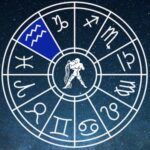
AQUARIUS (Jan. 20-Feb. 18):
While sleeping, my Aquarian friend Janelle dreamed that she and her family lived in a cabin in the woods. When dusk was falling, a strange animal put its face against the main window. Was it a bear? A mountain lion? Her family freaked out and hid in a back bedroom. But Janelle stayed to investigate. Looking closely, she saw the creature was a deer. She opened up the window and spoke to it, saying, “What can I do for you?” The deer, who was a talking deer, said, “I want to give you and your family a gift. See this necklace I’m wearing? It has a magic ruby that will heal a health problem for everyone who touches it.” Janelle managed to remove the necklace, whereupon the deer wandered away and she woke up from the dream. During subsequent weeks, welcome changes occurred in her waking life. She and three of her family members lost physical ailments that had been bothering them. I think this dream is a true fairy tale for you in the coming weeks, Aquarius.

PISCES (Feb. 19-March 20):
A psychologist friend tells me that if we have an intense craving for sugar, it may be a sign that deeper emotional needs are going unmet. I see merit in her theory. But here’s a caveat. What if we are currently not in position to get our deeper emotional needs met? What if there is at least temporarily some barrier to achieving that lovely goal? Would it be wrong to seek a partial quenching of our soul cravings by communing with fudge brownies, peach pie, and crème brûlée? I don’t think it would be wrong. On the contrary. It might be an effective way to tide ourselves over until more profound gratification is available. But now here’s the good news, Pisces: I suspect more profound gratification will be available sooner than you imagine.

ARIES (March 21-April 19):
This may sound weird, but I think now is a perfect time to acquire a fresh problem. Not just any old boring problem, of course. Rather, I’m hoping you will carefully ponder what kind of dilemma would be most educational for you—which riddle might challenge you to grow in ways you need to. Here’s another reason you should be proactive about hunting down a juicy challenge: Doing so will ensure that you won’t attract mediocre, meaningless problems.

TAURUS (April 20-May 20):
Now is an excellent time to start learning a new language or to increase your proficiency in your native tongue. Or both. It’s also a favorable phase to enrich your communication skills and acquire resources that will help you do that. Would you like to enhance your ability to cultivate friendships and influence people? Are you interested in becoming more persuasive, articulate, and expressive? If so, Taurus, attend to these self-improvement tasks with graceful intensity. Life will conspire benevolently on your behalf if you do. (PS: I’m not implying you’re weak in any of these departments; just that now is a favorable time to boost your capacities.)

GEMINI (May 21-June 20):
Barbara Sher and Barbara Smith wrote the book I Could Do Anything If I Only Knew What It Was: How to Discover What You Really Want and How to Get It. I invite you to think and feel deeply about this theme during the coming months. In my experience with Geminis, you are often so versatile and multi-faceted that it can be challenging to focus on just one or two of your various callings. And that may confuse your ability to know what you want more than anything else. But here’s the good news. You may soon enjoy a grace period when you feel really good about devoting yourself to one goal more than any other.
WANT MORE? Listen to Rob’s EXPANDED AUDIO HOROSCOPES, 4-5 minute meditations on the current state of your destiny — or subscribe to his unique daily text message service at: RealAstrology.com
(Zodiac images by Numerologysign.com, CC license)
SHARE The Wisdom With Friends Who Are Stars in Your Life on Social Media…
“Friendship is certainly the finest balm for the pangs of disappointed love.” – Jane Austen
Quote of the Day: “Friendship is certainly the finest balm for the pangs of disappointed love.” – Jane Austen
Photo by: James Nilsson
With a new inspirational quote every day, atop the perfect photo—collected and archived on our Quote of the Day page—why not bookmark GNN.org for a daily uplift?

Good News in History, June 29
223 years ago today, Frédéric Bastiat, the French economist and writer was born. He is known not only for pioneering some of the most fundamental concepts in economic thought, but doing so with wit, humor, and in such a way as to make it nearly impossible to misunderstand. Those concepts are, the “broken window fallacy” and “the seen and the unseen” in economic activity. READ about these bedrock societal truths… (1801)
Tips and Products to Help Your Dog Handle the Fireworks This Fourth of July

Imagine if every sound you heard was 30% more acute—that’s what it’s like to be a dog when fireworks start going off.
Because of the festive nature of fireworks, many dogs don’t get exposure to them during their critical learning windows as a puppy.
By the time they start going off on the 4th of July or the 1st of January, they may have never experienced anything like the sudden sound and vibrations of the explosions.
There are ways, however, that one can ensure their dog(s) aren’t left feeling like the sky is falling this Fourth of July, from desensitizing them to the sounds early in their life, to providing a quiet, secluded space with white noise.

Tips—plan ahead
“Train long before the fireworks are due, and… counter-condition and desensitize by creating a positive association and a gradual exposure to fireworks,” said Ali Smith, a professional dog trainer, to National Geographic.
This can sometimes be done even if your dog is already grown by associating the loud explosions with something positive like a treat. YouTube videos of fireworks, with the volume gradually increased, can help them become accustomed to the noise profile of fireworks.
Another tip given to Nat Geo was to make sure they get plenty of exercise in the daytime hours. Play and exercise can help a dog remain calmer for longer, so there’s no reason why this wouldn’t work in regards fireworks. One study comparing various methods of stress reduction in dogs during fireworks displays found this to be the most effective.
Lastly, consider making a safe house for your dog with drawn curtains, dimmed lights, their favorite toys, and plenty of treats, so if they do decide to run and hide, they’re going somewhere that’s going to be secure and comforting.
Products
“Humans can detect sounds at 20,000 times per second, while dogs can sense frequencies of 30,000 times per second,” says Dr. Ruth MacPete, veterinarian and author of the award-winning children’s book Lisette the Vet.
This very real distress for dogs has inspired a number of products to help them cope with fireworks displays.
Some involve pressure and weight, as dogs feel they’re being cuddled even when you’re not there to do it. These include the ThunderShirt and weighted dog blankets.
The ThunderShirt is a wrap that applies gentle pressure around your dog’s torso that has the similar effect of swaddling an infant. Some users on Amazon report it being effective, but others recommend conditioning dogs to associate the ThunderShirt with something positive before using it in advance of fireworks.
A weighted dog blanket like this one basically works in the same way, and is perhaps preferable if your dog likes to hide under things.
For sound reduction products, one could use a pair of dog earmuffs or a white noise machine.
Several white noise machines are designed for infants, dogs, and adults with difficulties sleeping—making them a decent investment if two or more of these entities are in your household.
With over 3,500 ratings totaling an average of 4.7 stars, the YogaSleep Dohm White Noise Machine has been reported by users to be effective at calming their dogs. A machine like this is also perfect to add to your dog’s safe house.
Earmuffs typically come in two forms—hard cups or a compression sleeve. The compression sleeves seem to get better reviews on Amazon.
“My dog is a rescue and living in NY has him stressed. He is constantly scarred of loud noises all day every day,” said the reviewer of the Nanaki Dog Hoodie. “Last week he was hiding after a fireworks and I knew I needed to find something, [and] I do believe we found our solution. Eureka! The price is easy on the wallet, it’s adjustable and it’s washable. He seems comfortable and doesn’t mind it at all.”
SHARE These Great Ideas For A Dog In Need Of Some Relief This 4th…
$25.00 ‘Bacteria Batteries’ Allow Farmers to Power Their Sensing Equipment with Soil
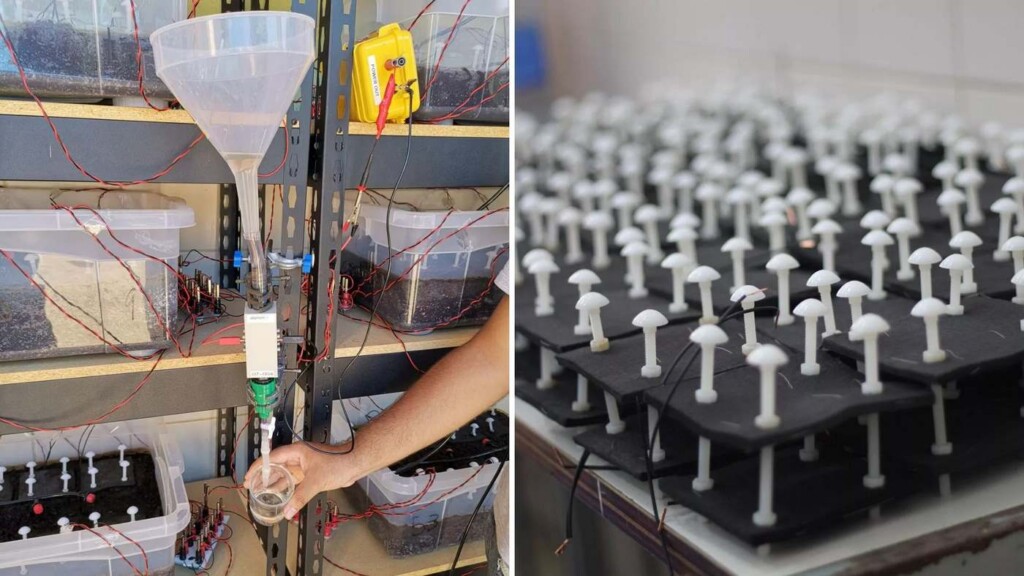
A UK ag-tech firm is pioneering bacterial batteries that they hope will allow farmers in the future to collect precise data about soil conditions with computing equipment powered by the soil itself.
Designed to be installed and forgotten about, the batteries absorb power through bioelectrochemical processes that occur within soil microbes. Collecting these electrons via a cheap array of electrodes, the idea is that the resulting power can be used to run sensors and computers that help farmers monitor moisture content and other key markers to maximize yield.
The firm is called Bactery, and their bacteria-powered batteries build on ‘soil microbial fuel cells’ (SMFCs) that were developed in 2019 to power a water filtration system in Brazil.
Dr. Jakub Dziegielowski was part of the research team that developed SMFCs, and over the last 5 years of research and development, he and his colleagues have improved the design, allowing it to actually “stimulate” bacterial processes and maximize energy collection.
“[W]e’ve learned a whole lot more about the different bioelectrochemical processes, and grasped a better understanding of the roles both bacteria and the soil play in this complex equation,” Dr. Dziegielowski tells Euronews Green.
UNIQUE WAYS TO POWER THE WORLD: French Town to Light its Streets With Bacteria Luminescence That Needs No Electricity
Existing apparatus for collecting soil data has drawbacks for farmers looking to leverage technology on their farms. Sensors and internet-connected devices require power, which means either a battery system that has to be recharged and replaced, a generator that consumes fuel, or the installation of solar panels which may not be viable for certain farms at certain times of the year.
Bactery’s soil-powered batteries cost just $29.00 and come without maintenance requirements.
USING WHAT’S IN THE GROUND: Scientists Are Recycling Wastewater to Reclaim Valuable Phosphorous to Put Back in Soil
“Farmers are increasingly valuing the importance of data to make informed decisions towards resource-efficient agricultural practises,” Professor Mirella Di Lorenzo, one of Bactery’s directors, told Euronews. “We are removing the barrier to generating that data by creating a sustainable way to power sensors, and making them always-on, cheap, low-maintenance and low-impact.”
SHARE This Innovative Idea For Power Generation—Using The Very Soil…
Fossil of Neanderthal Child with Down’s Syndrome Hints at Early Humans’ Compassion

Archaeologists examining finds dug up in a Spanish cave network in 1989 found skull fragments of a 6-year-old Neanderthal, which would have been exciting on its own, but the skull carried two major surprises.
The first is that an analysis of the inner ear canal showed signs of Down Syndrome, the earliest-known evidence of the genetic condition.
The second is that the child survived until 6, indicating compassion and willingness to bear extra work on behalf of individuals in a group who couldn’t take care of themselves. It gives a new perspective on the instincts for kindness and caring among our earlier ancestors.
Discovered in the Valencia region’s cave complex known as Cova Negra, Homo neanderthalensis activity at the site was dated to between 273,000 and 146,000 years ago.
An analysis of fragments that made up the individual’s temporal bone, which protects the inner ear canal, showed alterations only known in those with Down Syndrome. Other abnormalities include a smaller cochlea, the main hearing component of the audio organ, and irregularities in the formation of the semicircular canals, three small tubes that govern balance and sense head position.
“The pathology which this individual suffered resulted in highly disabling symptoms, including, at the very least, complete deafness, severe vertigo attacks and an inability to maintain balance,” said Mercedes Conde-Valverde, a paleoanthropologist at the University of Alcalá in Spain.
BRIGHTER LOOKS AT THE PAST: Much Like Stonehenge, Solstice Sunlight Would Have Danced on the Walls of This Neolithic Spanish Tomb
The lead author of the study of the bone fragments, published in the journal Science Advances, told the Guardian that the sex of the individual is unknown, but they call it Tina for short.
“Given these symptoms, it is highly unlikely that the mother alone could have provided all the necessary care while also attending to her own needs. Therefore, for Tina to have survived for at least six years, the group must have continuously assisted the mother, either by relieving her in the care of the child, helping with her daily tasks, or both,” Conde-Valverde added.
A STORY JUST LIKE THIS: Thousands of Years Ago, a Woman Underwent Two Surgeries to Her Head–and Survived Both Procedures
It’s taken many years for scholars to agree that Neanderthals had virtually the same capacities for what we might call ‘humanity’ as their cousins Homo sapiens.
It’s been discovered that they created art using pigments, used symbolic objects and perhaps even a spoken language, engaged in group hunting methods, and demonstrated tolerance and reciprocity.
SHARE This Uplifting Perspective On Our Earlier Ancestors…
Lotus Grown from 200-year-old Seed in Full Bloom at Kyoto’s Byōdō-in Temple – (LOOK)

At a famous Buddhist temple in Japan, pots of lotus flowers augment the already breathtaking scenery of the temple—but they’re more than what they seem.
The lotus is a foundational part of Buddhist iconography, but the plants sitting in front of the UNESCO World Heritage Site of Byōdō-in Temple in Uji were grown from seeds found buried in a layer of dirt from a pond dug by monks there over 200 years ago.
The seeds were recovered when the pond was excavated 25 years ago, and are now bearing a special kind of lotus flower variety—Byōdō-in Temple Lotus. Milky white and diaphanous, the monks say they are pleasing to look at during a moment of stillness.
The flowers are quite similar to those depicted on the ancient murals of the temple’s Pheonix Hall, called Hou-ou-do in Japanese, reports NKH World.
The fact that after 200 years the seeds were still capable of growing into a plant epitomizes the true nature of the lotus plant—not as a dainty ornamental, but as a hardy survivor; anyone familiar with lotuses know they continue to bloom even if the water is filthy and contaminated.
MORE BEAUTIFUL SIGHTS: Millions of Wildflowers Now Delight the Town After Vermont Couple Got Tired of Mowing the Lawn All Day
Temple officials, who place around 50 pots of lotus plants around the temple every season, said the flowers began to bloom last week. They added that many buds are being formed and the color of the flowers appears good. They will last until mid-July.
WATCH the story below and see the flowers…
SHARE This Beautiful Flower And The Amazing Story Of Its Rebirth…
“You win and you lose, and if you don’t know how to lose, you don’t know how to live.” – Tony O’Reilly
Quote of the Day: “You win and you lose, and if you don’t know how to lose, you don’t know how to live.” – Tony O’Reilly (RIP, Ireland’s first billionaire)
Photo by: James Nilsson
With a new inspirational quote every day, atop the perfect photo—collected and archived on our Quote of the Day page—why not bookmark GNN.org for a daily uplift?

Good News in History, June 28
Happy 53rd Birthday to entrepreneur Elon Musk. Through his ambition, sleepless work ethic, and engineering brilliance, Musk has undoubtedly transformed the world for the better with his work at Tesla and SpaceX. With the former, he made electric cars cool and widely desired for the first time, resulting in sales that have removed over 1 million internal combustion engines from the roads, with the latter, he created the world’s first reusable rocket, and gave NASA a spacefaring supply chain independent of Russian spacecraft. READ more about the entrepreneur, not the public figure… (1971)
UK Boy Has Brain Implant Fitted to Control Epilepsy Seizures in World First
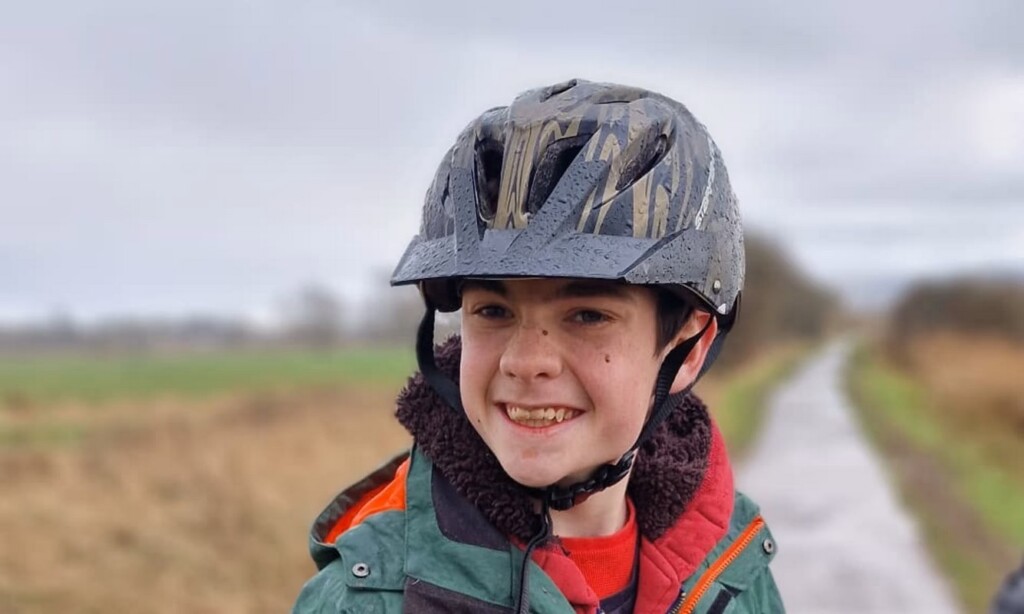
For thirteen years this poor fellow has suffered from treatment-resistant epilepsy, but thanks to a cutting-edge brain implant, is able to look forward to days without seizures.
Oran Knowlson is the first person in the world to receive this implant, part of a human trial pilot study on treating Lennox-Gastaut syndrome, a rare form of epilepsy that can result as many as 100 seizures a day.
The 13-year-old from Somerset, England, needed around-the-clock attention and care since the age of 3, as some of the seizures were so strong they’d stop his heart and require him to be resuscitated.
After receiving the brain implant, his mother declared to the Guardian “I definitely now have a teenager” remarking on Oran’s newfound ability to ignore his mother.
“The future looks hopeful, which I wouldn’t have dreamed of saying six months ago,” she said.
“For Oran and his family, epilepsy completely changed their lives and so to see him riding a horse and getting his independence back is absolutely astounding,” said Martin Tisdall, a consultant pediatric neurosurgeon at Great Ormond Street Hospital, London, where Oran was treated. “We couldn’t be happier to be part of their journey.”
During the surgery, Tisdall and the operating team inserted two electrodes deep into Oran’s brain to a region called the thalamus. Wires were then run up to a neurostimulator on the underside of Oran’s cranium.
OTHER BIOTECHNOLOGIES: Scientists Regrow Retina Cells to Tackle Leading Cause of Blindness Using Nanotechnology
Designed by Amber Therapeutics, it delivers constant neurostimulation to help suppress the seizures by blocking the signals that cause them from reaching the thalamus. The device can be recharged by a pair of wireless headphones.
Oran is one of three kids who were part of the pilot study, which is looking to recruit another 22 with Lennox-Gastaut syndrome.
MORE PEDIATRIC MEDICINE: 13-year-old Successfully Undergoes World-First Treatment to Cure Rarer-Than-Rare Wild Syndrome
“Deep brain stimulation brings us closer than ever before to stopping epileptic seizures for patients who have very limited effective treatment options,” Dr. Tisdall added.
“We are excited to build the evidence base to demonstrate the ability of deep brain stimulation to treat pediatric epilepsy and hope in years to come it will be a standard treatment we can offer.”
CELEBRATE This Young Man’s New Chance At A Normal Life…
South Sudan’s Epic Effort to Protect the World’s Little-Known Largest Mammal Migration
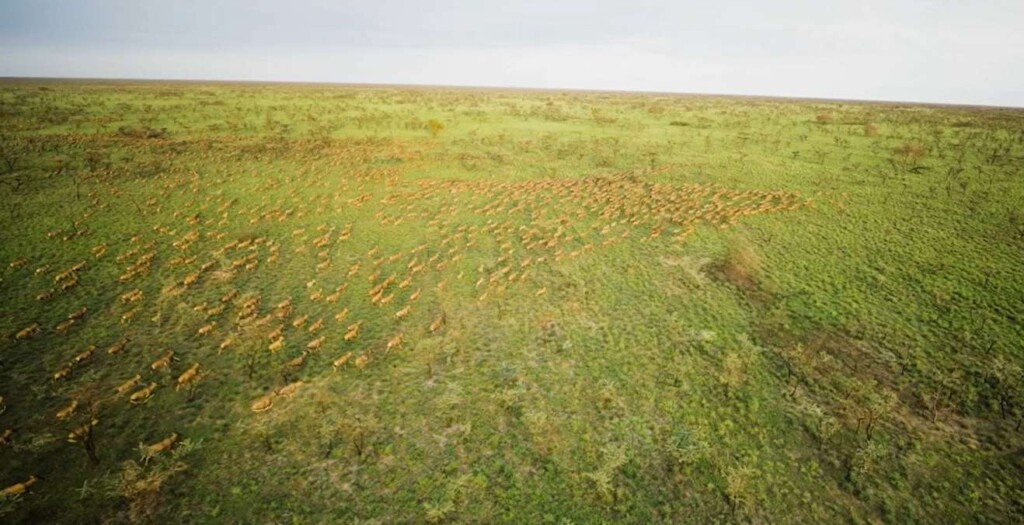
“The greatest conservation opportunity on the planet,” isn’t in the Amazon, the Andes, Australia, or anywhere else you’d likely imagine. It’s in South Sudan.
In a story that truly demonstrates how much there is left to explore in the world, the world’s largest migration of land mammals is now understood to take place in South Sudan, and the government, with the help of African Parks, is rushing to protect it.
Ecologists have long known the migration through South Sudan’s “No Man’s Land” exists, but didn’t really understand how it worked, or the scope of it. Unlike the caribou migrations across Canada, or the wildebeest migrations in Kenya’s Mara grasslands, No Man’s Land is filled with all manner of migrating species, including Mongalla gazelle, bohor reedbuck, white-eared kob, and tiang—all of which are antelope species.
Believing that the protection of these migration routes and the 6 million animals they play host to are the most significant opportunities for conservation anywhere on Earth, African Parks and the government of the Republic of South Sudan signed a 10-year agreement for the management of the No Man’s Land, currently located within Boma National Park and Bandingilo National Park, totaling 12,700 square miles, or four times the size of Yellowstone.
The 20-year civil war between what is now Sudan and South Sudan seems, according to African Parks, to have steered entirely clear of this massive area.
To start management and implement modern protections, African Parks, a non-profit that manages national parks for conservation across Africa, including in conflict zones, embarked on the largest GPS collaring survey of large animals ever undertaken, including 12 species at 126 GPS trackers.
Together with aerial surveys and assistance from members of the 17 different ethnic groups that live primitively in the areas, African Parks began to unravel the mystery of this massive movement of animals. The antelope moved in a wide circle, altering course to intercept any rainfall.
SIMILAR SUCCESS STORIES: Iberian Lynx Slinks Back From Brink of Extinction Within Just Two Decades of Conservation
“We flew for the first 30 to 40 minutes, and we didn’t see anything. I was like, ‘Oh, no, maybe it’s over. Maybe the wildlife has already disappeared,'” David Simpson, park manager for African Parks, told ABC News, sharing his insights from being aboard an aircraft for one of the surveys.
CHECK THIS OUT: Conservation Almost Always Provides Incredible Results, First-of-its-Kind Report Shows
“Then we get out there and we start hitting one, two, three, four. Then we start hitting hundreds and then we start hitting thousands, and then tens of thousands, then hundreds of thousands.”
MORE AFRICAN CONSERVATION: The First of 2,000 Privately Owned White Rhinos Get New Home – Rewilded by South African Conservancy
For the indigenous peoples, the migration is a symbol of abundance and balance in the natural world. They hunt, and so rely on the beasts for food, clothing, medicine, and shelter materials.
In order to help preserve their traditional life, African Parks has brought many of the people there on board to educate and work with them in their role in conserving the ecosystem for posterity.
WATCH the story below from African Parks…
SHARE This Great News From Africa With Your Friends Who Love Wildlife…
Pioneering Zero-Emissions Hydrogen Fuel-Cell-Powered Ship Successfully Tested in Japan

A consortium of Japanese firms has conducted successfully a demonstration of the first ever zero-emissions ship above 20 gross tons.
Sailing 30 kilometers between the Port of Kokura and the Shirashima Offshore Wind Farm, the HANARIA was powered entirely by hydrogen fuel cells.
An island nation, 10.25 million tons of carbon emissions from Japan’s transportation sector came from coastal shipping and transport. In 2015, former Prime Minister Yoshihide Suga outlined carbon neutrality by 2050 as a major component of Japan’s development strategy, in line with the Paris Climate Agreement, and major steps need to be taken to achieve that.
The Nippon Foundation, a research and development fund dedicated to passing the riches of the sea intact to future generations, worked in tandem with manufacturers and shipping operators to develop a suite of hydrogen-powered, zero-emission vessels for use in shipping and coastal transport.
Hydrogen is manufactured by using an electrical current to split water molecules into hydrogen and oxygen. The pure hydrogen can then be used as a substitute for heavy engine fuels like diesel and kerosene in a fuel-cell vehicle. If the hydrogen is manufactured with green energy, it’s known as ‘green hydrogen’.
A passenger ship, HANARIA spans 108 feet, (33 meters) weighs 248 gross tons, and is equipped with a hydrogen fuel system. She is expected to be used for transporting personnel to the offshore wind farm and for site tours.
JAPANESE TECHNOLOGICAL ADVANCES: Japan Moon Lander Comes Back to Life After Wonky Angle for its Solar Panel, but ‘Unprecedented Pinpoint Landing’
During the demonstration, she registered zero CO2 emissions using hydrogen fuel from her departure to her arrival and return.

“The realization of a hydrogen society requires not only technological development, but also city and social design, and we look forward to moving ahead with all parties involved,” said the project’s chief leader, Yoshihiko Hamamura, who also holds a post at the Toyota Motor Corporation’s Hydrogen Factory which supplied the hydrogen tanks for HANARIA.
MORE HYDROGEN ADVANCES: World’s First Electric Aircraft Flight Powered by New Liquid Hydrogen–Flew for 3 Hours
The Nippon Foundation has been carrying out the Zero Emission Ships Project since January 2022. The project plans to test two other vessels by the end of fiscal year 2026, including a yacht and a hydrogen-powered tanker.
The executive director of the Nippon Foundation, Mitsuyuki Unno, said that they hope to help Japan lead the world to zero-emissions shipping.
SHARE This Great Green-Blue News With Your Friends…
“The key to happiness is finding what you’re suited to do, and securing an opportunity to do it.” – John Dewey
Quote of the Day: “The key to happiness is finding what you’re suited to do, and securing an opportunity to do it.” – John Dewey
Image by: National Cancer Institute
With a new inspirational quote every day, atop the perfect photo—collected and archived on our Quote of the Day page—why not bookmark GNN.org for a daily uplift?
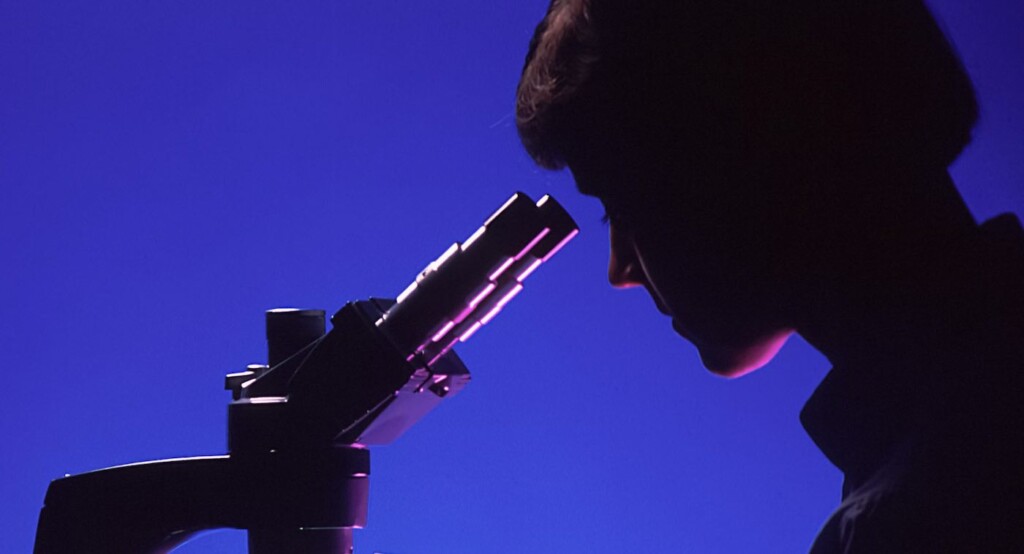
Good News in History, June 27
25 years ago today, skateboarder Tony Hawk became the first person ever to land the 900, or two-and-a-half full rotations in the air on a skateboard, when he completed the trick at the fifth edition of the X Games, in California. It took him twelve attempts, but managed it, and declared it was the “best day of my life.” WATCH the history below… (1999)
China’s Lunar Probe Returns World’s First Samples from Far Side of the Moon

China has become the first nation to gather samples from the Moon’s far side after the Chang’e-6 mission’s re-entry capsule touched down in Inner Mongolia yesterday.
Containing 4.4 pounds of rocks and dust—known officially as ‘regolith,’ the sample-return mission has been hailed as a milestone achievement by scientists who eagerly await what geological secrets the samples may hold.
The Chang’e-6 probe touched down on the Moon’s South Pole-Aitken Basin on June 1st. The lander module drilled for samples using a robotic arm and scoop, which were then stored in its hull where the ascent module took them back into space to rendezvous with the orbiter module.
Once onboard, the samples were shot back to Earth where they parachuted down onto the grass of the rural Siziwang Banner region of Inner Mongolia.
It followed five successful lunar missions (Chang’e 1 through 5) that included establishing a weather station on the Moon’s far side in Chang’e-4—the first time any craft had made it there, and a sample return mission from the polar region with Chang’e-5, which brought back the first Lunar samples since the Apollo missions.
“It’s a gold mine … a treasure chest,” James Head, a professor of planetary geosciences at Brown University, who was able to analyze regolith from the Chang’e-5 mission told CNN. “International scientists are totally excited about the mission.”
“This is a great achievement by China,” said Martin Barstow, a professor of astrophysics and space science at the University of Leicester. “Recovering any samples from the moon is difficult, but doing so from the far side, where communications are particularly difficult is a step taken by no other agency. A real technological feat.”
IS THERE LIFE ON MARS?: Ancient Lake Sediment on Mars Builds Excitement for Evidence of Life in the Perseverance Rover Samples
Scientists like Barstow and Head have several key interests in the samples. Since the Moon is tidally locked, the far side is never seen, but that doesn’t mean there’s nothing to see. In fact, the far side should contain a frozen record of the nature and character of the Moon and Earth during their earlier years.
Plate Tectonics have eliminated or obscured features and evidence of Earth’s earliest periods, but since there are no Plate Tectonics on the Moon, a continuous record from the beginning to the end should be found there.
WHAT THE LAST SAMPLES CONTAINED: China’s New Moon Rock Samples Contain Beautiful Crystal New to Geology
Additionally, the far side is covered with impact craters rather than the ‘maria,’ or frozen lava plains which cover the near side. The hope is that the South Pole-Aitken Basin should be able to tell scientists how many craters were formed during the Late Heavy Bombardment, a period lasting between 20 and 200 million years when the early Earth was under continuous pummeling by asteroids and even small planetesimals.
The chief interest in studying the Late Heavy Bombardment—a difficult task on Earth because of Plate Tectonics—is to see if it supports one theory of how life on Earth emerged: namely that water and other elements crucial for life were deposited during this period via the asteroids and failed planets colliding with our world.
FROM AN ASTEROID: Asteroid Sample Delivered Back to Earth in a ‘Brilliant Feat’–a Time Capsule of Ancient Solar System
Chang’e-6 is the last sample-return mission in the Chang’e mission series, with missions 7 and 8 slated for in-situ experiments destined to inform and assist a permanent Chinese robotic base on the Moon.
The Chinese space program has come on leaps and bounds in the last 6 years. Missions Chang’e 4 and 5, the latter being a sample return mission, were complete successes. Following Chang’e-5’s landing, but before the return of the samples, the CNSA became the only space program to see its first orbiter, first lander, and first rover sent to Mars all succeed on the first time of asking.
SHARE This Giant Leap For Mankind With Your Friends…





















